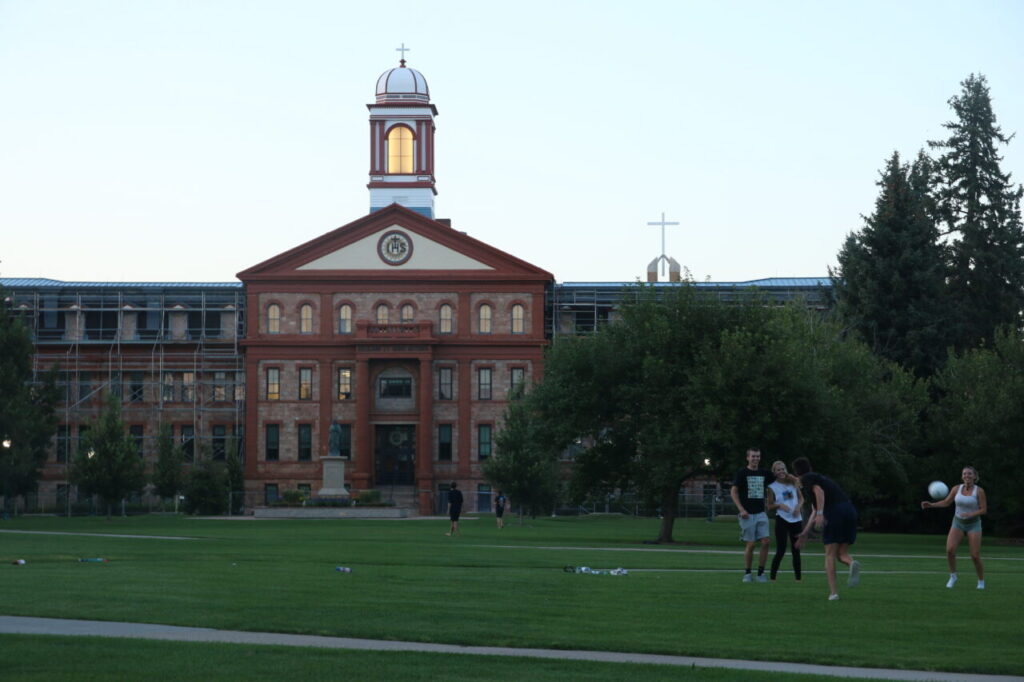Regis University recently reported its incoming freshman class will include significant increases to its first-generation, Latino/a/x, Catholic, Colorado-based and Pell Grant-eligible students.
Senthil Kumar, vice president for strategic enrollment management, was hired last fall to oversee the enrollment process, along with J.T. Smith, Regis’ dean of admissions and assistant vice president of enrollment management.

“Regis University is set to welcome a record- breaking traditional undergraduate first year and transfer new student class this fall,” Kumar said. “It is projected to be among the highest in the university’s history, with more than 600 students registered as of a week before classes are set to begin, an increase of 28% over the previous year. The university will also welcome over 900 new post-traditional, graduate and doctoral students, an increase of 72% over last year.”
Some of the numbers the university provided for this year’s 606 incoming students compared to last year’s initial enrollment included:
• 54% (327/606) are first-generation students; an increase of 60% (204 students)
• 51% (309/606) are Pell Grant-eligible students; an increase of 72% (180 students)
• 43% (261/606) are Latino/a/x students; an increase of 38% (189 students)
• 14% (87/606) are from Catholic high schools; an increase of 300% (29 students)
• 75% (455/606) are from Colorado; an increase of 43% (318 students)
The average tuition for Regis University is $41,099, an increase of nearly 3% from 2022. The total enrollment this fall is 4,549 students among undergraduate and graduate programs. Additionally, Smith said there are more than 250 students on the waiting list for the Regis pre-nursing program.
The incoming high school GPA for students is 3.67, up from last year’s 3.63.
“One of the things that we did this year is really focused on student engagement and spent a lot of time getting to know the students and their stories, and really having proactive outreach to address any issues that may come up so we can make their transition to college as smooth as possible,” Smith said.
Despite these new efforts, Regis had one of its lowest number of applications this year in recent history, Kumar said. Because Regis focused on looking for students in Jesuit high school systems and devoted more time to the recruitment process, he said the university is trying to bring in students who they think can be most successful in its programs.
“We wanted to focus on those who are specifically interested, the Catholic high schools we have partnered with all these years, first-generation students,” Smith said. “Bringing these students on campus … got them comfortable with Regis and got them comfortable with the campus, with the faculty, the staff, and it made that transition easier. The same thing for the parents. They got to know us, they got to know Regis, and they felt comfortable with leaving their children in our care.”
Kumar said the university used a “call center strategy,” which increased the engagement with students who had been admitted.
“Every student that was admitted was literally called before the admission (acceptance) letter went out,” Kumar said.
“We actually called the students to congratulate them and tell them they were admitted, and we told them about their financial plan. Only after that, the admission letters went out. So it was a very personalized service. You cannot do that personalized service with 10,000 applications, so it was done for a reason to get the best applicants.”
The increase in engagement with students is what Kumar called a “concierge service,” which really homed in on finding what prospective students needed from the university.
“That’s what I think I was able to bring to the team and this team carry the service to a whole other level,” Kumar said.
“For example, we rewarded students for coming to multiple open houses, like a micro scholarship.”
Kumar said the idea was to figure out how to continue Catholic students’ education through Regis University after they finished their first 12 years through primary school.
“We have a bigger plan, actually, to really (reach out) to about close to 1,500 Catholic high schools out there,” he said.

Be the first to comment